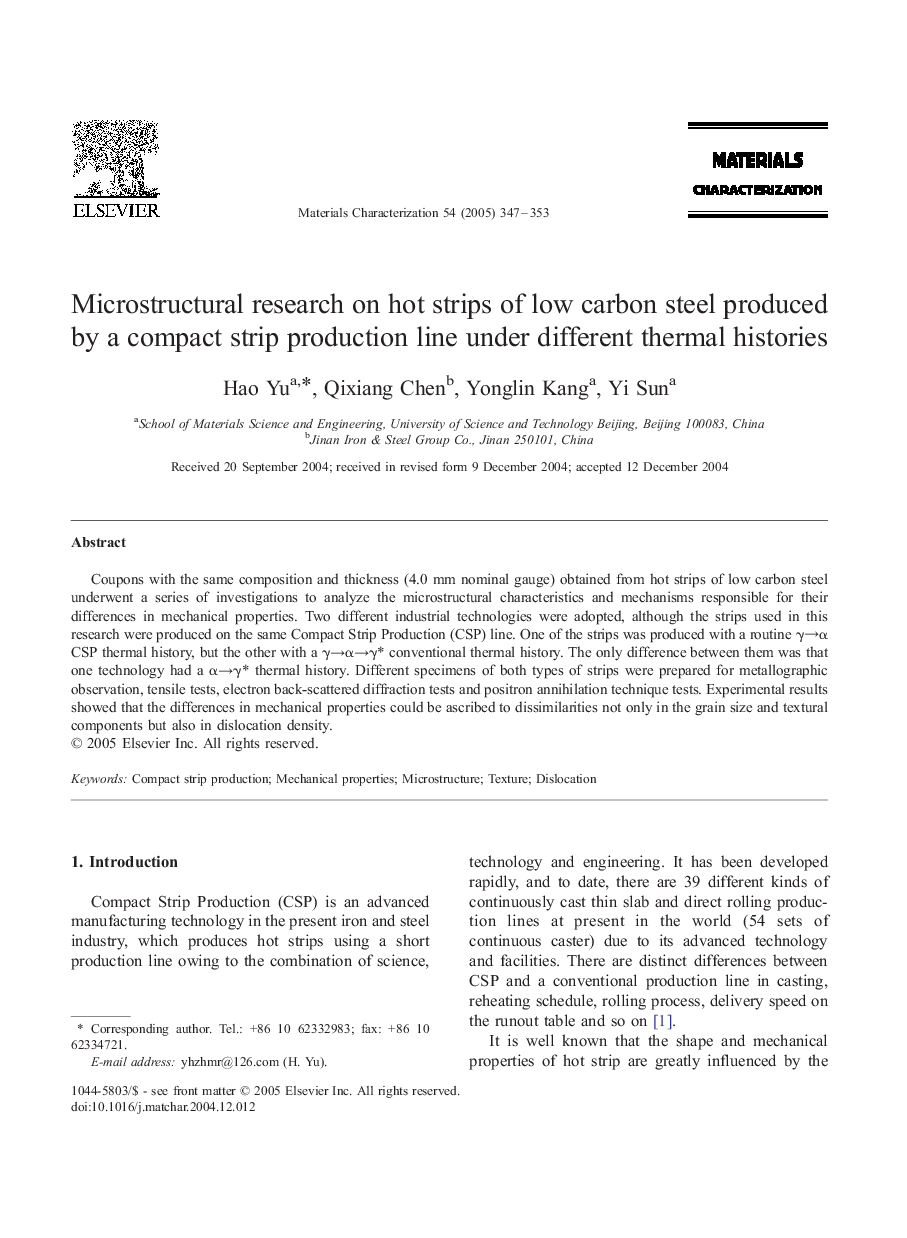| Article ID | Journal | Published Year | Pages | File Type |
|---|---|---|---|---|
| 9795255 | Materials Characterization | 2005 | 7 Pages |
Abstract
Coupons with the same composition and thickness (4.0 mm nominal gauge) obtained from hot strips of low carbon steel underwent a series of investigations to analyze the microstructural characteristics and mechanisms responsible for their differences in mechanical properties. Two different industrial technologies were adopted, although the strips used in this research were produced on the same Compact Strip Production (CSP) line. One of the strips was produced with a routine γâα CSP thermal history, but the other with a γâαâγ* conventional thermal history. The only difference between them was that one technology had a αâγ* thermal history. Different specimens of both types of strips were prepared for metallographic observation, tensile tests, electron back-scattered diffraction tests and positron annihilation technique tests. Experimental results showed that the differences in mechanical properties could be ascribed to dissimilarities not only in the grain size and textural components but also in dislocation density.
Related Topics
Physical Sciences and Engineering
Materials Science
Materials Science (General)
Authors
Hao Yu, Qixiang Chen, Yonglin Kang, Yi Sun,
